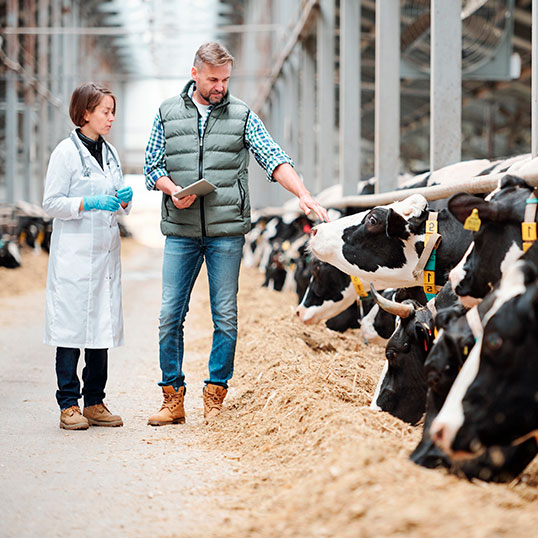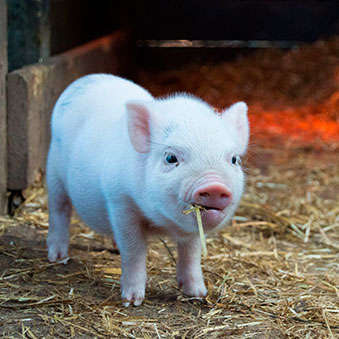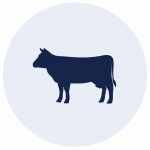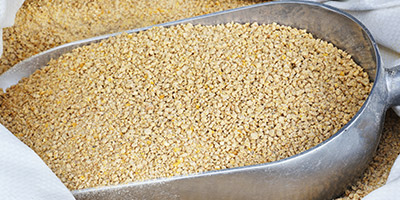Feed-Grade
Amino Acids
Realize the genetic potential of livestock species by providing amino acids in the correct quantities and balance
Achieve the correct quantities and balance of amino acids to meet the animal’s nutritional requirements for health and production, while reducing the amount of nitrogen that is excreted into the environment.
L-Lysine is an essential amino acid most likely to be deficient in livestock feeds. L-Threonine is an essential amino acid most likely to be deficient after lysine in commonly used livestock feeds. L-Tryptophan is an essential amino acid that tends to be deficient in piglet feeds, especially when primarily composed of corn. L-Valine is an essential amino acid that tends to be deficient in poultry feeds, especially when primarily composed of corn.


Feed Solutions with Amino Acids

Poultry Feed Enhancement with Valine

Piglet Feed Enhancement with Tryptophan

Ruminant Feed Enhancement with Specialty Products
Industries
Backed by Science
Sustainability
Ajinomoto is one of few feed manufacturers with an in-house Amino Acid lab. Partner with us to analyze your feed and gain access to our extensive database library.
Frequently Asked Questions
Our Eddyville, IA plant produces L-Lysine, L-Tryptophan, and L-Threonine. L-Valine is imported from our sister companies.
Please contact us for details. Typically, a sales contract is required.
As of October 1st, 2020, Ajinomoto Animal Nutrition North America, Inc. has merged into its affiliate company, Ajinomoto Health & Nutrition North America, Inc.
Animal Nutrition functions are now part of the Solutions and Ingredients Division.
Reach Out to Learn More
We are here to support your formulation, research, or field trial inquiries.
